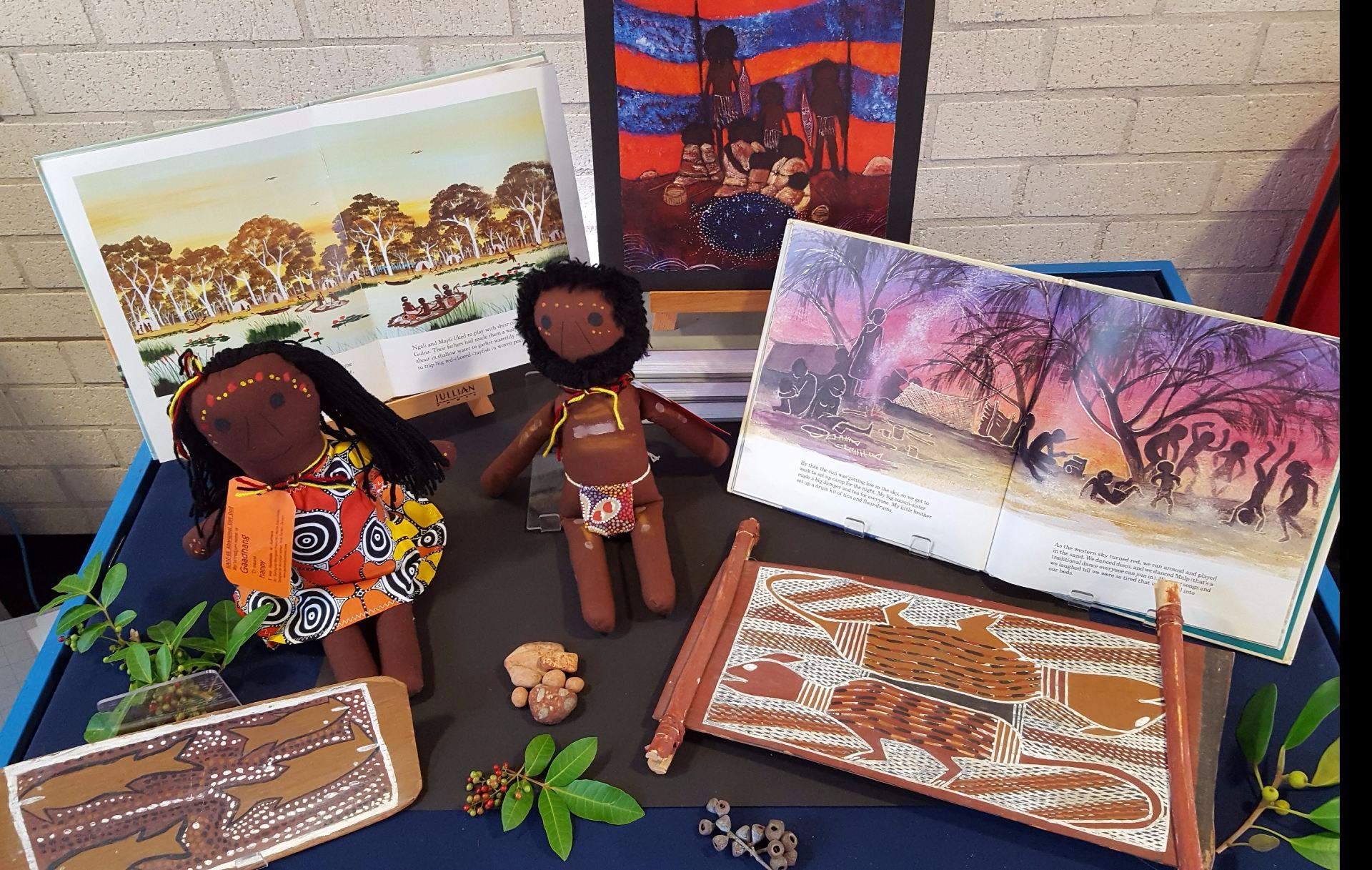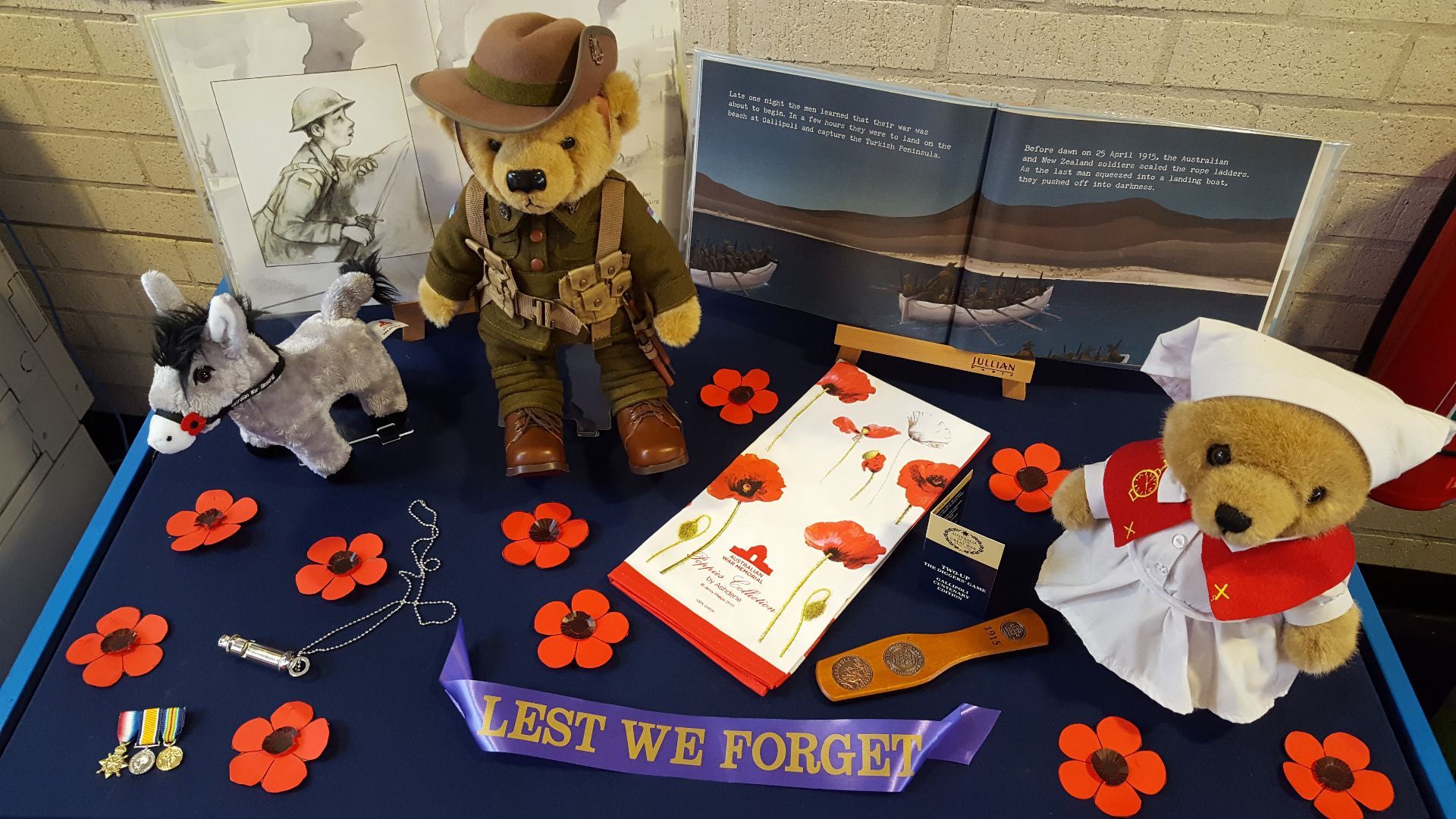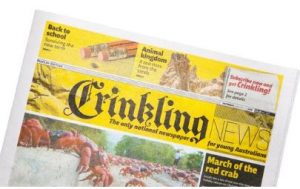It was wonderful to create the new library displays to commemorate National Reconciliation Week. This year we have two displays – one focusing on animals and the beautiful colourful artworks in a selection of children’s picture books, a wooden lizard from Uluru and a turtle painted on stone. The other display represents family highlighting children and traditional artworks on bark from my personal collection.

Australian animals

Children, family and culture
To commemorate Reconciliation Week all classes will be involved in activities and there are special visitors to share stories and knowledge with the children. In addition to the outstanding collection of picture books featuring Australian Indigenous peoples and culture some of the resources that class teachers have been particularly interested in for teaching and learning include:

Say Yes: A story of friendship, fairness and a vote for hope by Jennifer Castles, and illustrations by Paul Seden. This picture book sensitively captures the 1967 Referendum in way that enables historical issues and perspectives to be shared with children. The Allen & Unwin site provide teaching notes and Reading Time has a superb review, the suggested reading age is 7-12.
 Stories for Simon by Lisa Sarzin and Lauren Briggs, a moving and beautifully illustrated picture book that helps explain the Stolen Generations to younger students. The Stories for Simon website provides background material about the story and links to Teachers’ Resource notes. The illustrator Lauren Briggs has visited our school on sharing the story with primary students and art workshops with high school students.
Stories for Simon by Lisa Sarzin and Lauren Briggs, a moving and beautifully illustrated picture book that helps explain the Stolen Generations to younger students. The Stories for Simon website provides background material about the story and links to Teachers’ Resource notes. The illustrator Lauren Briggs has visited our school on sharing the story with primary students and art workshops with high school students.
 Welcome to Country written by Joy Murphy and illustrated by Lisa Kennedy is an outstanding picture book portraying personal traditions of Aboriginal people allowing for teaching and learning of understanding and respect for Aboriginal culture. Walker Books have provided extensive Teacher Notes for this book and a reference to a wide range of resources including picture books with Aboriginal themes, nonfiction books for younger and older readers, websites and video links.
Welcome to Country written by Joy Murphy and illustrated by Lisa Kennedy is an outstanding picture book portraying personal traditions of Aboriginal people allowing for teaching and learning of understanding and respect for Aboriginal culture. Walker Books have provided extensive Teacher Notes for this book and a reference to a wide range of resources including picture books with Aboriginal themes, nonfiction books for younger and older readers, websites and video links.

The Message Stick book series published by Nelson Cengage are a wonderful series of books offering Dreaming stories with short plays such as How the Murray River was made and informative books on fishing, hunting and gathering, and bush tucker. The illustrations and photos are highly appealing and informative and text at a level suitable for lower grades. The series also includes a Teacher Resource book.
 A special book I enjoy reading to Kindergarten classes is No Way Yirrikipayi! by the children from Milikapiti School, Merville Island and Alison Lester. This is a story of a hungry crocodile that wonders through the natural environment seeking food. Written in English and Tiwi it offers a rich resource to read aloud and encourages children to join in with the repeated phrase “No way Yirrikipayi your not eating me today.”
A special book I enjoy reading to Kindergarten classes is No Way Yirrikipayi! by the children from Milikapiti School, Merville Island and Alison Lester. This is a story of a hungry crocodile that wonders through the natural environment seeking food. Written in English and Tiwi it offers a rich resource to read aloud and encourages children to join in with the repeated phrase “No way Yirrikipayi your not eating me today.”
Books featured in the displays:
Kangaroo and crocodile : my big book of Australian animals by Bronwyn Bancroft
Where is Galah by Sally Morgan
ABC Dreaming by Warren Brim
Children of the Lake by Percy Trezise
Going for Oysters by Jeanie Adams
Welcome to Country by Joy Murphy (two images)
Torres Strait Islander girl and Aboriginal boy from Scholastic School Essentials
Lizard, stone and bark artworks from my personal collection.












